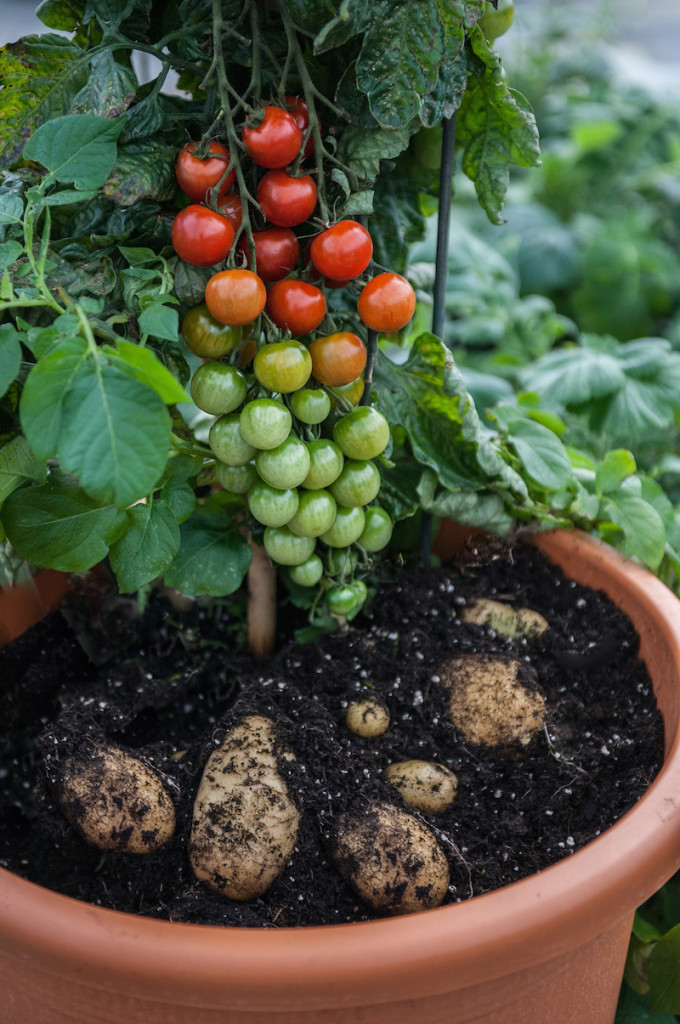Hybrid foods appear to be popping up left and right, from the Cronut to Dewitos, the world is fiending for these unique food combos. However, some might be surprised that many fantastic and innovative foods have been in the works for years. These new hybrids don’t need to be baked or fried, they can be grown. Delightfully sweet Cotton Candy Grapes, for example, are just the first in a line of many flavored grape varietals planned by The Grapery. According to their website, flavors like strawberry and raspberry are on their way. It truly is a marvelous world that we live in.
The latest entrant into this arena is the charmingly-named “Ketchup ‘n’ Fries” plant from SuperNatural Grafted Vegetables, a plant that grows potatoes on its roots and tomatoes on its vines.
This miracle of agriculture is made possible through grafting, a technique that has been around for centuries. By taking two plants and fusing them together, farmers have been able to establish sturdier roots and disease-resistant plants. The Ketchup ‘n’ Fries plant is made using soft tissue grafting, a process that essentially takes the top half of one plant and grows it onto the severed bottom half of another. Painful though it sounds, the result (pictured below) is nothing short of beautiful.

Photo Courtesy of NPR
The plant is actually not a genetically modified organism, nor is it a monstrous freak of nature. Because tomatoes and potatoes are both varietals of the nightshade family, it simply took finding the correct combination to create a commercially viable product. With white potatoes on the bottom and sweet cherry tomatoes on top, Ketchup ‘n’ Fries is perfect for everything from tomato sauce and salads to french fries and potato gratin.
Incredibly, the Ketchup ‘n’ Fries took 15 years to develop, and a varietal (named the TomTato) has already been on sale in the UK for about a year. Although the UK got the plant before us, I say that we got the better name.
Although the Ketchup ‘n’ Fries has been received relatively well, not all modified varietals are greeted with open arms. The CCN-51 cacao tree, for example, was developed so that the normally temperamental crop can grow almost anywhere and withstand diseases. Additionally, the CCN-51 can produce yields far greater than normal cacao trees. Beans from the tree, however, are nearly unpalatable and have to go through several extra steps (such as sundrying) to be acceptable for commercial use.
However, both cooks and farmers can get excited about this fascinating new plant. Aspiring gardeners (or mad scientists) can expect to see the Ketchup ‘n’ Fries in local markets as soon as this spring.
Hungry for more food combos?




